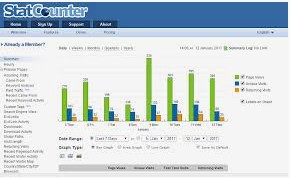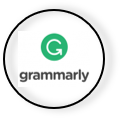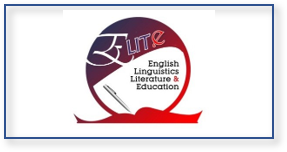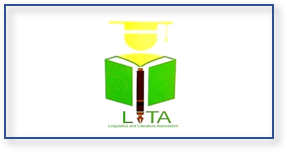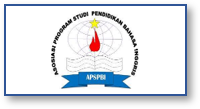The Use of Online Authentic Reading Materials In Online Reading Class
DOI:
https://doi.org/10.15642/ijet2.2021.10.2.148-157Keywords:
Keywords: Online authentic reading materials, online ELT, authenticityAbstract
Abstract. Education in Indonesia, as the large-scale power of the has to be compelled the continuity of teaching activities during the COVID-19 pandemic online learning. It inspires teachers to choose a suitable material to fulfill students’ needs and interests in teaching language. The appropriateness and well chosen authentic materials used by teachers in a context of reading have to cover meaningful content in which those are relevant. Thus, this study attempts to investigate those authenticity used as well as teachers’ challenges in implementing online authentic reading materials in online reading class of higher education. The study is a qualitative. The subjects are three EFL teachers of higher education that teach General English and English for Specific Purposes freshmen for two semesters. The data collection techniques are observation and interview. In analyzing the data, this study uses Ary et al. (2010) theory: familiarizing and organizing; coding and reduction; interpreting and representing. The findings revealed that authenticity is considered as the pivotal thing since, in this case, English is taught as foreign language. The authentic materials can be said its prevalence by measuring each authenticity based on three areas including SLA (Second Language Acquisition), language pedagogy and ICT (Information and Communication Technology). It could establish the applied authenticity to the language learning design materials, especially learning English language. Moreover, The challenge was about the materials, students’ interests, classroom activities and classroom interaction occurred among teachers and the students.
Downloads
References
REFERENCES
(2020, April 01). Retrieved November 21, 2020, from https://setkab.go.id/en/president-jokowi-signs-govt-regulation-on-large-scale-social-restrictions/.
(2020, April 21). Retrieved November 24, 2020, from the United Nations: https://news.un.org/en/story/2020/04/1062232.
Anam, K., Munir, A., Anam, S. (2019). Teachers' Perception about Authentic Materials and Their Implementation in the Classroom. IJET, Vol. 8, Issue 1, June 2019, pp.1-9.
Ary, et.al. (2010). Introduction to Research in Education. Eight Edition. United States: Wadsworth Cengage Learning.
Bao, W. (2020). COVID-19 and online teaching in higher education: A case study of Peking University. Hum Behav & Emerg Tech. Vol. 2 , 113-115.
Baxter, J., Callaghan, G. and McAvoy, J. (2018). The Context of Online Learning: Neoliberalism, Marketization and Online Learning. In Baxter, J., Callaghan, G. and McAvoy, J. Creativity and Critique in Online Learning. Exploring and Examining Innovations in Online Pedagogy. UK: Palgrave Macmillan.
Carrillo, C. and Flores, M. A. (2020). COVID-19 and teacher education: a literature review online teaching and learning practices. European Journal of Teacher Education, 43:4 , 466-487.
Creswell, J.W. (2012). Educational Research. Planning, Conducting, and Evaluating Qualitative and Qualitative Research. Fourth Edition.
Dhawan, S. (2020). Online Learning: A Panacea in the Time of COVID-19 Crisis. Journal of Educational Technology Systems, Vol. 49 (1) , 5-22.
Fauzia, S. (2019). A Descriptive Analysis of Students’ Difficulties in Comprehending English Reading Text. Thesis. Unpublished Paper: IAIN Salatiga.
Huan, N. B. and Ngan, N.T.K. (2017). Summarizing Strategy: Potential Tool to Promote English as a Foreign Language (EFL) Students’ Reading Comprehension in a Vocational School, Vietnam. European Journal of Education Studies. Vol. 3. Issue 8. 51-72.
Huda, M. (2017). The Use of Authentic Materials in Teaching English: Indonesia Teachers' Perspective in EFL Classes. PEOPLE: International Journal of Social Sciences, 3 (2), 1907-1927.
Irawati, I. (2019). Use of Questioning Strategy to Facilitate Students’ Reading Comprehensio in Taiwan. Journal of English as a Foreign Language. Vol.9, No.2. 217-230.
Kispal, A. (2008). Effective Teaching of Inference Skills for Reading. Literature Review. National Foundation for Educational Research. UK: The Department for Children, Schools and Families.
Klomp, N. (2020, May 28). Retrieved November 21, 2020, from The Jakarta Post.com: https://www.thejakartapost.com/academia/2020/05/28/how-covid-19-will-transform-access-to-education.html
Martin, F. and Oyarzun, B. (2017). Distance Learning. In West, R.E. Foundations of Learning and Instructional Design Technology. The Past, Present, and Future of Learning and Instructional Design Technology. EdTech Books.
Mishan, F. (2005). Designing Authenticity into Language Learning Materials. UK: Intellect Ltd.
Nobles, L.M.A.G and Ortega-DelaCruz, R.A. (2020). Making Connections: A Metacognitive Teaching Strategy in Enhancing Students’ Reading Comprehension. Journal of English Education. 5(1):49-60. DOI:10.31327/jee.v5i1.1209.
Nobles, L.M.A.G and Ortega-DelaCruz, R.A. (2020). Making Connections: A Metacognitive Teaching Strategy in Enhancing Students’ Reading Comprehension. Journal of English Education. 5(1):49-60. DOI:10.31327/jee.v5i1.1209.
Peacock, M. (1997). The Effect of Authentic Materials on The Motivation of EFL Learners. English Language Teaching Journal, 51. January 9, 2021 from https://busyteacher.or/16195-reading-material-8-best-authentic-sources.html.
Purwaningrum, A.Y. and Yusuf, F.N. (2020). Investigating Digitized Authentic Materials: Pre-Service Teachers' Voice. Edulite Journal of English Education, Literature, and Culture. Vol. 5, No. 2, August 2020, pp. 225-239.
Rahadhiyanti, dkk. (2016). Authentic Reading Materials from Internet to Enhance the Eight Grade Students’ Reading Comprehension. EFL Education Journal.Vol. 3, No. 8. pp. 573-584.
Rao, P. S. (2020). The Use of Authentic Materials as Motivational Tool in The ESL or EFL Classrooms. Academicia. An International Multidisciplinary Research Journal Vol. 10, Issue 2, February 2020, pp. 7-18.
Richard, J.C. (2006). Communicative Language Teaching Today. New York: Cambridge University Press.
Sepulveda-Escobar, P. and Morrison, A. (2020). Online teaching placement during the COVID-19 pandemic in Chile: challenges and opportunities. European Journal of Teacher Education, 43:4 , 587-607.
Shank, P. and Sitze, A. (2004). Making Sense of Online Learning. A Guide for Beginners and the Truly Skeptical. San Francisco: Preiffer A Willey Imprint.
Soufiane, T. (2016). Authenticity in Materials Development in Issues in Materials Development. Critical New Literacies. M. Azarnoosh et.al. (Eds.). Boston: Sense Publishers.
Wahyuni, F. and Jufri. (2016). Using Making Connections Strategy in Teaching Reading Comprehension at Senior High School. Journal of English Language Teaching.Vol.5.No.1.1 Serie C. 175-183.
Yavani, Z. (2017). Authentic Materials: Teachers' Perception and Why It is Matters. ELT-Echo, volume 2, number 1, June 2017, 26-36.


